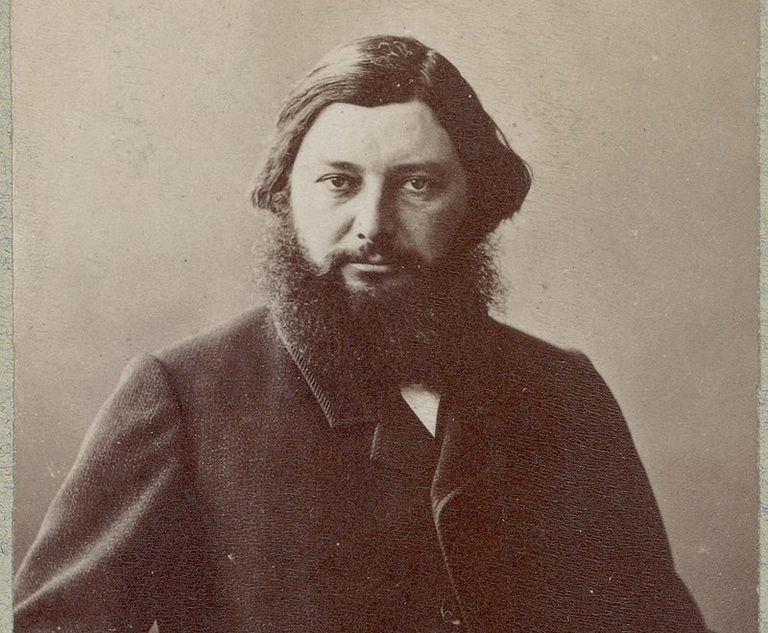Gustave Courbet was born in 1819 in Ornans, a rural French village along the border with Switzerland, into a family rising into the bourgeois class of land and business owners. His father pressed him to become an attorney, a family ambition for firstborn sons of the French middle class during the 19th century. Gustave refused (as later Edward Degas, Paul Cezanne and Henri Matisse, thank heaven, refused their fathers).
Fast forward 30 years: In just six months between fall 1849 and summer 1850, Courbet made three large paintings which both importantly influenced art history, and commented on the highly charged public policy issues then dominating French discourse. The Stonebreakers, 1849, 74.3/4 x 118.1/8 in. (formerly Gemaldegalerie, Dresden, presumably destroyed in 1945) depicts the wretched physicality of two laborers, one too old and the other too young, breaking stones used to surface roads. A Burial at Ornans, 1849, 124 x 263 in. (Musee d’Orsay, Paris) has some four dozen life-size figures, including officiants, at the local cemetery, but there is an absence of religious feeling. In The Peasants of Flagey Returning From the Fair, 1850, 81 x 108 in. (Musee d’Orsay) seven figures, including Courbet’s father in the canvas center, are physically close to each other but emotionally aloof from each other.


 Gustave Courbet (Public Domain)
Gustave Courbet (Public Domain)




